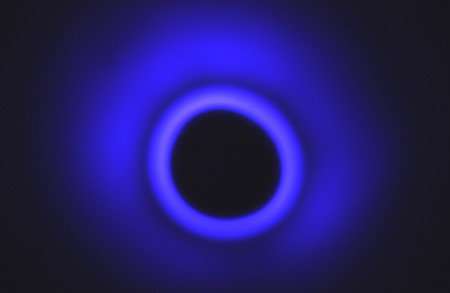Plasma ring managed to create outdoors
 Plasma is often called the fourth aggregate state of matter. It has been studied for decades, but scientists still have many questions about the properties of plasma to be resolved. It is used in some industries, and one of the most important uses of plasma is energy, that is, a fusion reactor. Scientists seek to ignite an artificial star right in the depths of the installation, to make possible thermonuclear fusion with the production of a huge amount of energy.
Plasma is often called the fourth aggregate state of matter. It has been studied for decades, but scientists still have many questions about the properties of plasma to be resolved. It is used in some industries, and one of the most important uses of plasma is energy, that is, a fusion reactor. Scientists seek to ignite an artificial star right in the depths of the installation, to make possible thermonuclear fusion with the production of a huge amount of energy.
If it were possible to achieve the creation of a reactor, then the problem of electricity shortage would be practically solved. Now scientists all over the world are engaged in the formation of a stable plasma “center” of thermonuclear fusion. Earlier it was reported that specialists from China managed to light an artificial star in a thermonuclear reactor and maintain its existence for a full 100 seconds. Now scientists from the California Institute of Technology have been able to create a stable plasma ring in the open air with the help of a jet of water and a crystal plate.
“We were told that it was impossible to do this. But we were able to create a stable plasma ring, maintaining its existence as long as necessary, without a vacuum or magnetic field, ”said Francisco Pereira, one of the team members.
True, this plasma ring is not suitable for energy, because it is “cold”. To obtain it, scientists sent a very thin stream of water just 85 microns thick to the crystal plate under a pressure of 612 atmospheres. The speed of the jet of water was 305 m / s. Scientists compare this to the movement of a human hair with the speed of a bullet.
The crystal surface at the same time carried a negative charge. When water gets on it, positively charged ions are obtained. This, in turn, creates a triboelectric charge, which contributes to the uplift of electrons from the surface of the water, ionizing atoms and molecules in the air. So a plasma ring appears in the air. It is in its place as long as the water jet continues to beat into the crystal plate.
The better the surface is polished, the clearer the generated plasma ring is.
The plasma ring is very small, its diameter is only a few tens of microns. Scientists noticed that during the experiment, the plasma begins to interfere with the radio signal and interferes with the work of scientists' smartphones. “We have not previously encountered this phenomenon. We believe that all the observed effects appear due to the properties of the materials used in the experiment, ”Pereira said.
So far, it’s too early to talk about the commercial use of technology - this way of producing plasma looks too specific, and even cold. True, the experiment participants believe that the technology of creating a plasma without the use of powerful electromagnetic fields or vacuum, perhaps, can be used to store energy. True, experts have not yet left detailed explanations on this issue.
Earlier, another group of scientists, this time from the Moscow Institute of Physics and Technology (MIPT), found that irradiating tissue cells with cold plasma leads to their regeneration and a process that can be described as rejuvenation. Experts believe that this property of cold plasma can be applied in medicine - for example, in the treatment of non-healing wounds. As an example, the wounds that occur in diabetes, oncology and HIV. In addition, non-healing wounds often appear in older people with various health problems.
“The positive data we observe after plasma treatment may be associated with the activation of the autophagy mechanism of cells. It leads to the fact that damaged organelles are removed from the cell, which ultimately restarts cell metabolism, ” says Elena Petersen, co-author of the research and head of the Laboratory of Cell and Molecular Technologies of MIPT.
Cold atmospheric pressure plasma, which is a partially ionized gas with a temperature below 100,000 kelvins, can be used in the field of biology and medicine. In addition to wound healing, cold plasma can be used to combat harmful bacteria.
All Articles